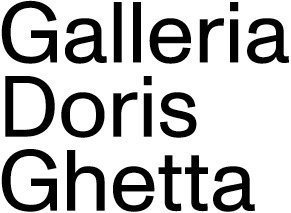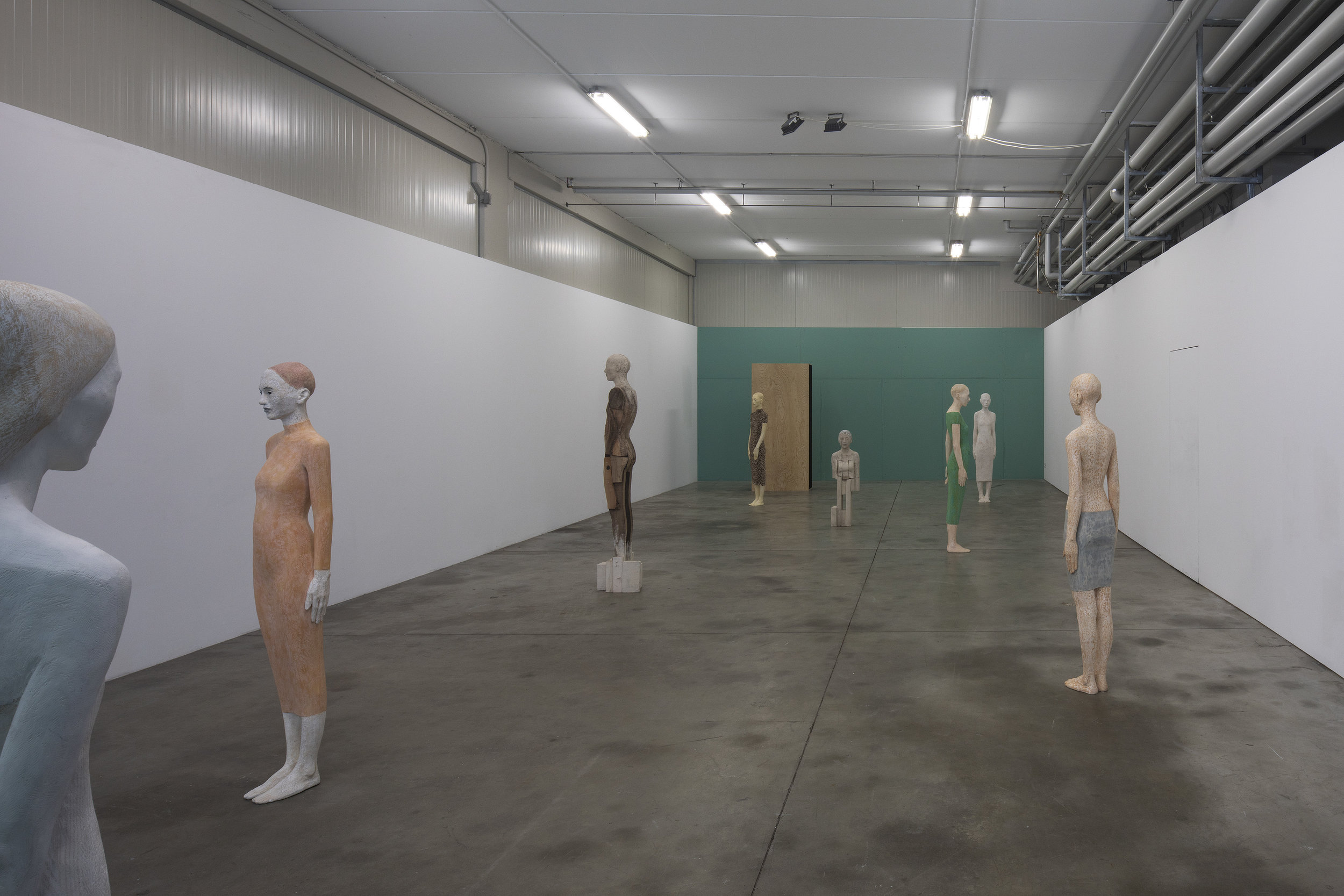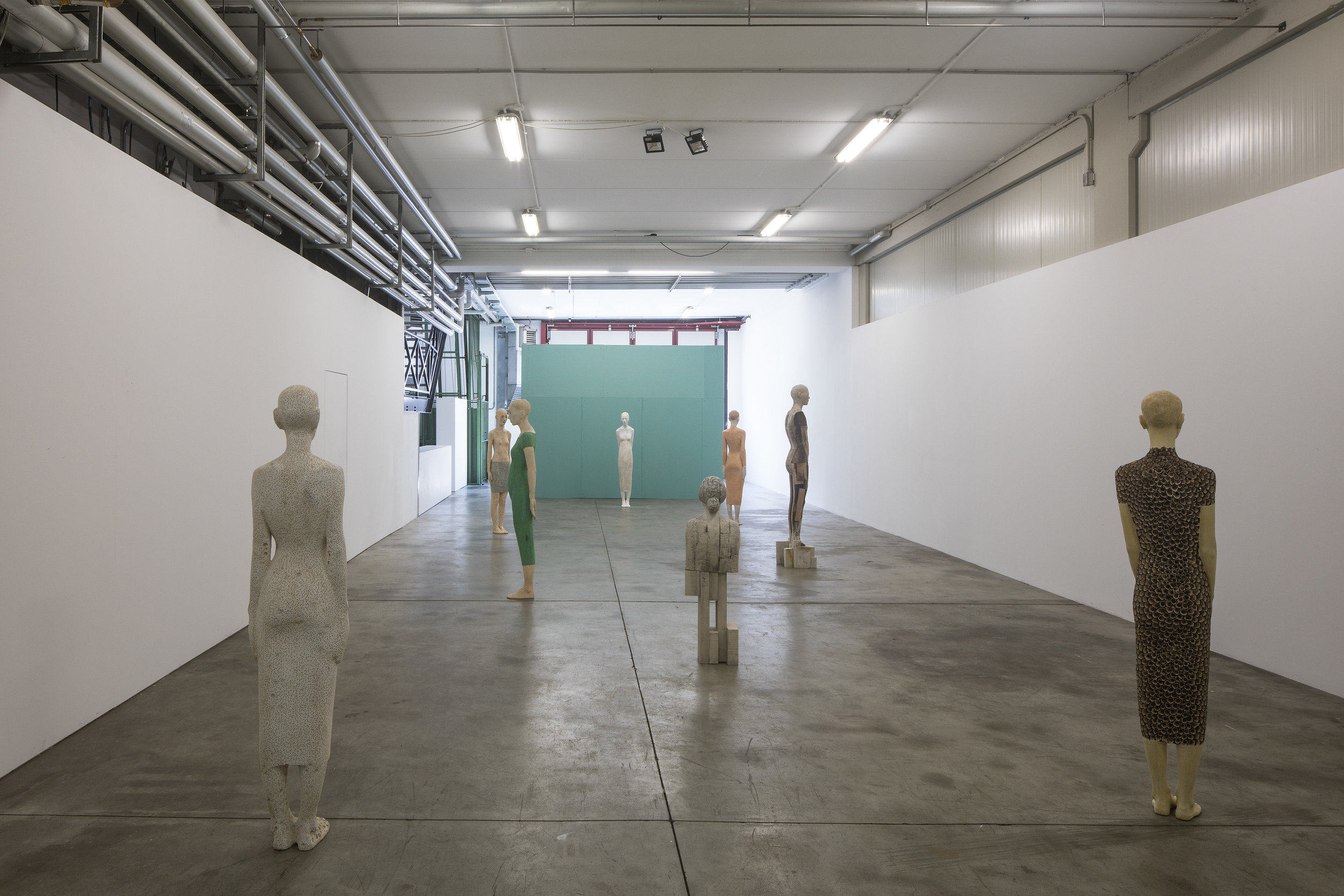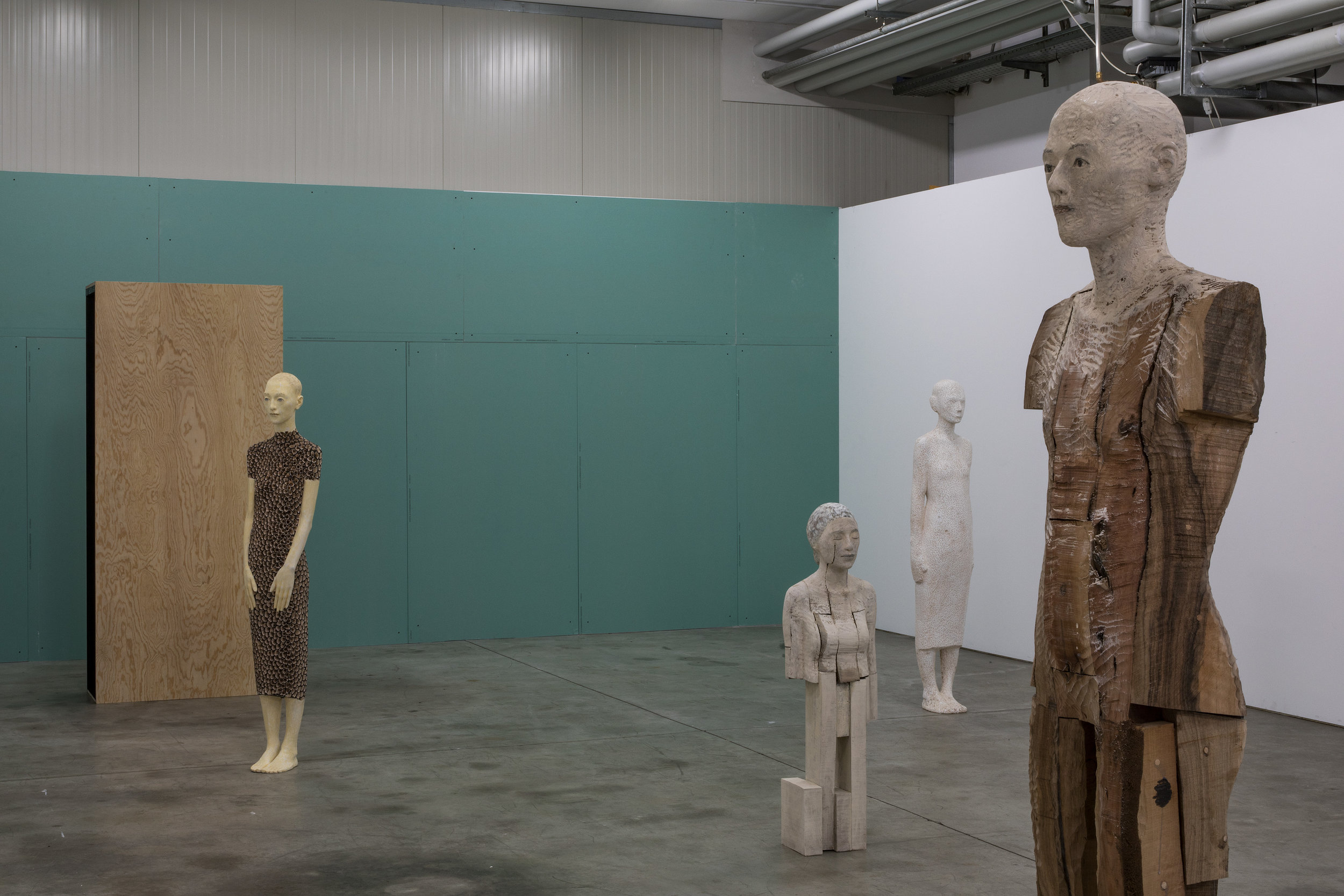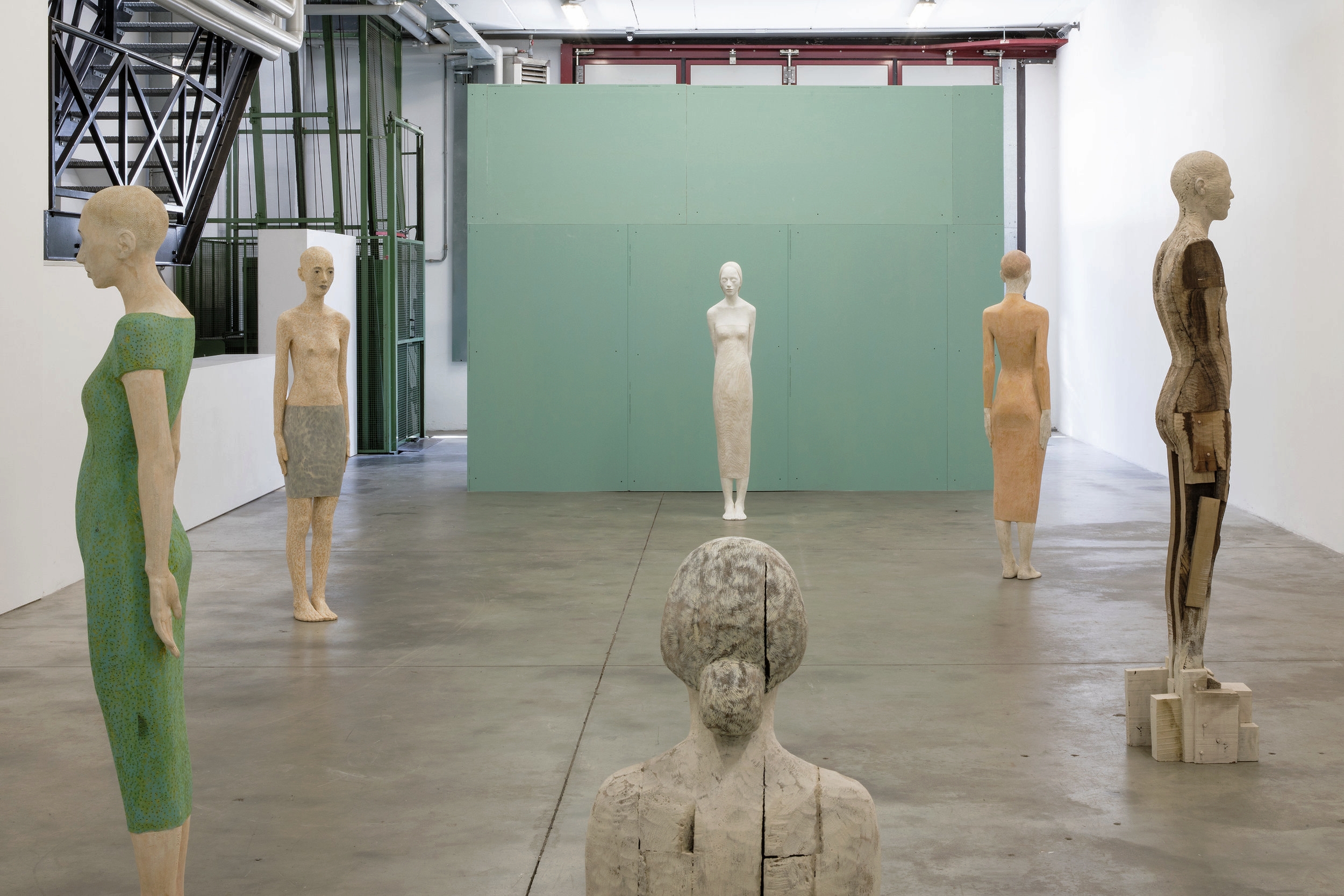WALTER MORODER
Press release
Comunicato stampa
Pressemitteilung
WALTER MORODER
sun plaza
curated by Sabine Gamper
installed by Mariano Pichler
Vernissage, 16.03.2018 19.00h
artist talk: 21.03.2018 20h with Hans-Peter Riese
‘As children, we’re frightened by our reflection in the mirror: as adults we’re frightened when we realize what we look like.’ (Walter Moroder, 2008) According to Lacan, during childhood recognition of our image in a mirror constituted by the Other prevents us from living an authentic existence in the world, separating important ambits of our lives from feelings and sensory perceptions. The pursuit of reality and identity through sight and perception and the image of what is different from us is a leitmotiv of the work of Walter Moroder. Thanks to a mounting redolent of a public meeting place, this exhibition endorses the artist’s intention by making the exchange between works and viewer possible. Walter Moroder carves mostly life-size female figures out of wood and dresses them in long, shaped clothes. The statues, often bare-chested, stand up straight and vertical, their hands hanging by their sides. Their bearing is restrained and calm and they appear to the world with great naturalness and inner strength, their heads held high and their expressions introverted. Echoing the Aura concept – namely the unapproachability and unique unrepeatable existence of a work of art – set out by Walter Benjamin in 1935, the works seem to communicate with their bodies. But according to Moroder, it is our individual relationship with the works that is informed by variety of energies. In other words, it is the relationship between viewer and work of art that transmits the work itself. For Walter Moroder, art is a place where what count are fundamental questions about our humanity, about our relations with others and ourselves, and about our profound connection with nature and the cosmos, irrespective of social and political issues, fashion and individual interests. In these sculptures, he reveals nostalgia for authenticity, originality and truth, but also a return to his roots. The son of a sculptor, Walter Moroder has been acquainted with the art of woodcarving from the cradle. Carving human figures in a classical, traditional style has never been his principal artistic goal but rather a technique characteristic of the sculptural tradition of his family in particular and of the Val Gardena in general. Moroder’s debut works were more rooted in abstraction, which allowed him to practise a language of his own that extended beyond his origins. The decisive turning point came on a trip to Sulawesi, in Indonesia, in 1996, to discover the local cult of the dead, celebrated with carved figures. The experience drew Moroder back to figuration, for him an inexhaustible source of inspiration to this day. Since the 1990s, Walter Moroder has produced a large number of figures, mostly female. Formally, they look alike, all human with a delicate appearance, thin bodies and a beauty that attracts the viewer. All are incarnations of an ideal of universal humanity that transcends the solely female sphere it represents, Galleria Doris Ghetta dorisghetta.com Pontives Sud 8 info@galleriaghetta.com 39046 Ortisei, Val Gardena +39 366 150 0243 despite the fact that they are never elaborated as single figures and in spite of their character as archetypes, totems or living pictures. Though Moroder works by moving from one figure to another, the sculptures must not be seen as parts of a series, but rather as the result of a pursuit – starting from scratch every time – of the founding characteristics of the human nature that unites us. The artist approaches them with his own sculptural work in a process of introspective conversation with himself. Whenever the result looks too beautiful, too perfect or evident, Walter Moroder intervenes destructively, drilling holes in the figure, breaking down its symmetry, distorting the proportions of single parts of the body and altering the expressions of the face. Some figures become cross-eyed, others have disproportionate ears, shoulders at odd heights or over-thin arms. Abstraction is a continuous intention that accompanies work on the figure. Hence it is not so much absolute beauty that the artist is looking for as perceived beauty, made up of small defects, imperfections and off-guard moments. To achieve this, he turns to nature, whose forms are born much more organically than the human pursuit of an unattainable perfection that too often concludes with the negation of life itself. The material Walter Moroder uses for his figures is pine wood, a wood with a life of its own that closely resembles human skin. He is suspicious, on the other hand, of lime wood, the preferred wood of most sculptors for its neutrality and uniformity, because he sees it as being too perfect. He adds a final touch of colour to his figures, applying dolomite plaster, a material just as easily available where he comes from. Some figures are also made with pellets or sawdust and, on occasion, Moroder decides to leave the single wood components visible as the rough blocks from which the figure is composed. The surface of the skin is never smooth and always displays chisel marks. Like the artist himself, none of these figures fit into any of the different categories within the art system. In conclusion, Moroder’s sculptures cannot be fully described in words. As works of art, they act as a bridge between near and far, attraction and refusal, beauty and perfection, body and soul.
Sabine Gamper
